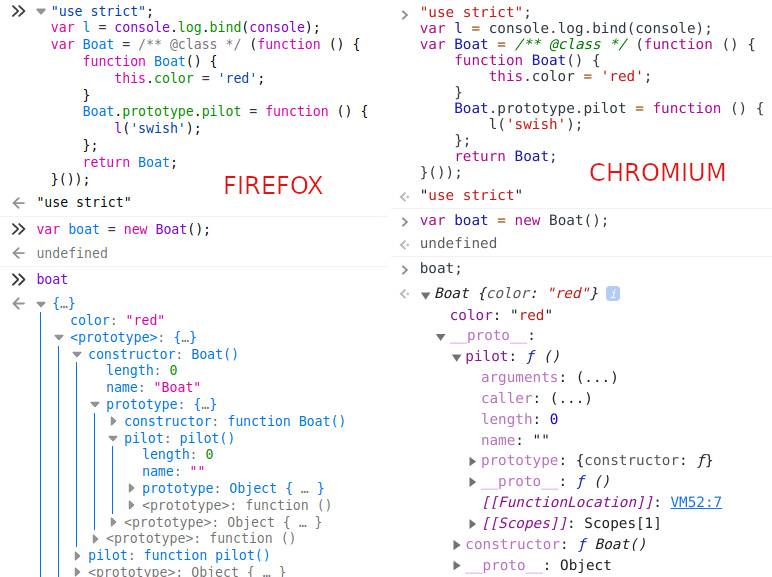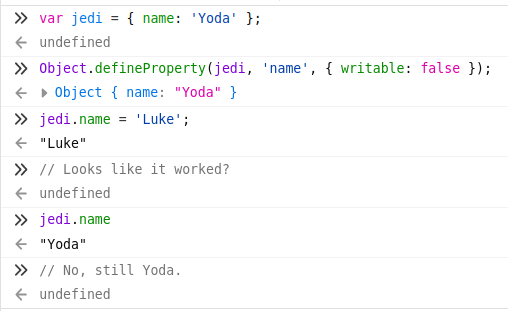Decorators¶
JavaScript Prototype vs Classes¶
const l = console.log.bind(console);
Study this: MND link on Object.
class Boat {
color = 'red';
public pilot() {
l('swish');
}
}
The above gets translated to ES5 as:
"use strict";
var Boat = /** @class */ (function () {
function Boat() {
this.color = 'red';
}
Boat.prototype.pilot = function () {
l('swish');
};
return Boat;
}());

Neither <prototype (Firefox) nor __proto__ (Chromium) actually
exist in the spec. They are added by the browsers JS engines to help
with debugging.
Plain property literals are added directly on the constructor. Methods (functions) are added to the constructor’s “prototype”.
TypeScript Decorators and Properties¶
Note
Properties (literal ones, not methods or accessors) are added to the constructor function, not to the prototype of a class. Decorators’ first argument is always the prototype of the class. So, decorators do not have access to an instance’s property.
Decorators on properties basically only let’s us know that that key is something like “color” or “jedi”, but you can’t access or manipulate their values.
type Decorator = {
(target: any, key: string): void;
};
const myDecorator: Decorator = (target: any, key: string): void => {
// Always undefined. ‘target’ is always the prototype of the
// thing being decorated. ‘skill’ is not defined on ‘Jedi.prototype’.
l(target[key], target.skill);
};
class Jedi {
// This property gets added to the constructor function, no to
// the prototype property.
@myDecorator
public skill: string = 'Lightsaber';
}
TypeScript Decorators and PropertyDescriptors¶
When we create a “class”, we actually create a constructor function (remember that ES6 classes are just syntax sugar — they do not bring any new paradigm or concept to EcmaScript), and define a prototype on that constructor function.
The first argument of a decorator is the prototype of the class. The target of a decorator lists only methods and accessors (getters and setters). Plain, literal properties are defined on the constructor function, not on the constructor function prototype.
The second argument of the decorator is the key, the name of the method/accessor.
There is also a third argument, the ‘’PropertyDescriptor’’ which is used to “override” the default behavior of the thing being decorated.
Note
Decorators are only run when the code is first parsed, i.e. when a class is defined, not when the class is instantiated. When you “run a file” that defines stuff, the decorators are run. It is like they are run when the engine is parsing and interpreting the code in the file, BEFORE any code is actually run. But, inside the decorator, we can override what will happen when methods or class stuff is actually run.
Decorators are basically called with:
myDecorator(MyConstructor.prototype, 'someMethodFromMyConstructor');
PropertyDescriptor is part of ES5.

Warning
If we make a typo, and spell it wrongly, like “writtable”, JS gives us NO ERRORS, but it will just leave the property still writable.